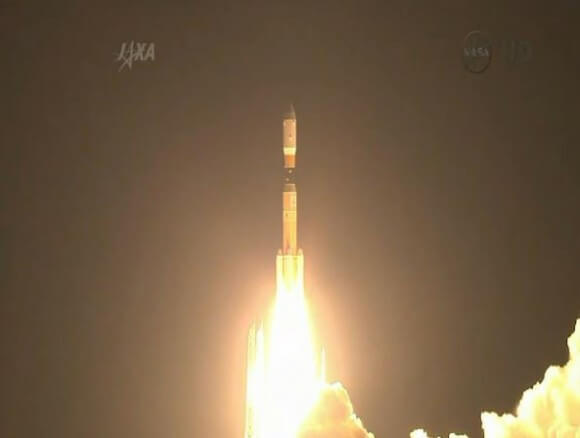On board the spacecraft are 3.6 tons of dry cargo, water, experiments and spare parts for the space station. The new robot, which is 34 centimeters in diameter is called Kirovo, and it was designed to communicate verbally with the astronauts and explore how a new human-robot interface could help astronauts in the space environment.

Fresh supplies and a new talking robot are on their way to the International Space Station. The Japanese Space Agency's HTV-4 spacecraft was successfully launched from the Tengeshima Space Center in Japan, and in six days it will dock with the International Space Station.
On board the spacecraft are 3.6 tons of dry cargo, water, experiments and spare parts for the space station. The new robot, which is 34 centimeters in diameter is called Kirovo, and it was designed to communicate verbally with the astronauts and explore how a new human-robot interface could help astronauts in the space environment.
Unlike the Russian Prorogs spacecraft that automatically dock with the station, HTV-4 will be captured by the robotic arm and towed to the harmonic component. The cargo spacecraft will receive an order to fly to a distance of about 14 meters and stop. Flight engineer Karen Nyberg will operate the Canadarm2 robotic arm during the rendezvous with the Japanese spacecraft known, apart from its serial number, as Kountouri.

6 תגובות
To the best of my memory, Israel's first satellite was launched with a rocket that was not developed in Israel.
The development of the spacecraft must be separated from the development of the missile.
If Israel develops a spacecraft, it can launch with a missile that has already been developed.
In my estimation, Israel has the knowledge and ability to develop a spacecraft.
correction
There should be "3 million people in every Apollo program"
I would add that this requires large aeronautical industries, tens of thousands of employees and huge budgets. To illustrate, the launch of an Apollo spacecraft cost half a billion dollars in 3s terms, and the entire Apollo program employed XNUMX million people.
Assaf, Israel is strong in tiny satellites, delivery to the space station requires cargo spacecraft carrying several tons of cargo. It's a completely different league. In my opinion, Israel does not have this ability. "But" if enough resources (=money) are allocated to it, we can do it better than everyone and at a fraction of the cost that other countries do.
Israel is unable to launch a spacecraft to the space station. Supply spacecraft weigh several tons far beyond the launch capacity of the rocket that launched the loaded satellites. The loaded satellites weigh an average of 180 kg. Launch missiles with payloads of several tons are very heavy and require a very large aeronautical industry and huge budgets that are far beyond the capacity of the State of Israel. To illustrate the Apollo spacecraft that were launched to the moon, the launch of each such spacecraft required an investment of half a billion dollars at the prices of the early 70s and in each Apollo program 3 million people were employed.
I wonder if Israel is able to launch a spacecraft to the International Space Station?